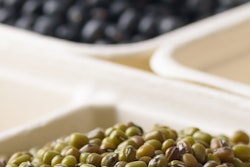UnPACKed with PMMI sits down with Luis Domenech, managing director of Market Intelligence Latin America to uncover the driving forces behind the remarkable growth in Mexico's packaging machinery market in 2022. Drawing from his extensive research and deep industry expertise, Domenech paints a vivid picture of how Mexico shattered records and describes how neighboring countries, particularly the United States and Canada, have played an instrumental role in Mexico's packaging machinery capital investments.
As the episode unfolds, Domenech provides invaluable insights into the factors that fueled the surge, from evolving consumer demands to technological advancements. Tune in as unPACKed explores the symbiotic relationship between Mexico's packaging industry and its North American counterparts, examining how collaboration and innovation have fueled this impressive growth trajectory.
To subscribe, rate, review, and find more unPACKED podcast episodes, visit pmmi.org/podcast or find us on Apple Podcasts, Spotify, iHeart Radio or wherever you listen to your podcasts.
Sean Riley:
With all the fancy introductions out of the way, welcome to the podcast, Luis.
Luis Domenech:
Thank you very much. John.
Sean Riley:
The Mexican packaging machinery market blew all records last year. It beat them all with an unbelievable, it almost seems like it's a fake number with an estimated growth of 25% in a single year, which from what I understand is the highest recorded packaging machinery imports, a record in production of packaged goods. Just smashed every record that was out there. I guess to start off, what do you attribute such tremendous growth?
Luis Domenech:
Yeah, 2022, an impressive year for the packaging machinery market in Mexico. There were several factors that contributed to the explosive growth of packaging machinery demand. As you mentioned, all the previous records were beaten, so we achieved the highest volume of packaging machinery imports in a single year. It was a 25% growth from 2021 to 2022. Also, the highest packaging machinery imports. Several countries, including Italy, China, Canada, and many others. They reached their highest historical shipments to Mexico, and there were several reasons driving this impressive growth. One was there was pent-up demand for packaging machinery from the pandemic. Several companies when the pandemic began, and we have the different waves of contagion, they placed purchasing on hold, but very soon demand caught up with their production. So they saw the need to invest. Since there were too many companies that placed their investments on hold, when they realized they needed to modernize or invest in new lines, the packaging machinery suppliers were already booked and have long back orders. So they began promising we can deliver your packaging machinery 18 to 24 months.
Sean Riley:
Yikes.
Luis Domenech:
So many companies say, no, we need it before that, and they began looking for alternative suppliers. That's one of the reasons why we see a tremendous growth in other countries. Typically, the packaging machinery imports in Mexico is supplied by Germany, Italy, and the United States, they continue to be the dominant players. But last year, the growth of other countries was also quite impressive, not only in the packaging machinery market, we beat it records, but we had the highest historical record in agri food exports.
The experts reached more than $50 billion, that was 12% more than the year before, and several of the agri food exports produced in Mexico, the produce goes inside of a package, and we also beat it the record of agri food imports, which also has a strong impact in packaging machinery because most of our agri food imports are grains and are bulk products that we import and we pack in Mexico. A good example is, for example, pork meat. We import pork legs and have car cases which are caught processed and packed in Mexico. So this record in port meat imports also has a positive impact in packaging machinery demand.
Sean Riley:
Interesting. You mentioned demand, but are there other main drivers for CPG companies that would cause them to invest in new packaging machinery?
Luis Domenech:
Yes. Besides pent-up demand, the CPG companies are seeing significant growth in demand for their products. There are two factors that have a very strong impact in the product demand. One is remittances that we are receiving mostly from the United States, but the remittances also hit a high record last year. We received 58.5 billion in remittances, which is way higher than the 51 posted in 2021, which was also way higher than the 40 billion received in 2020. So in just two years, remittances passed to 58 billion from 40.6 billion. Remittances are mostly money sent by workers working overseas to their families in Mexico, and large part of that money that they received is spent for covering their basic needs, including food and beverage.
In addition to their remittances, the Mexican government launched social programs that provide cash to the most vulnerable groups of the economy. So the elderly people, the handicapped, but also they provide funds to young unemployed people that many of that money is spent in packaged goods, in foods, in beverages.
The young people, they say a lot of that money is spent in alcohol and things like that, but all that is having an impact in packaged products demand. This money that is being distributed by the government for social programs, it adds another $32.8 billion to the economy. So you have $58 billion from remittances, $32 billion from the economy. That's a huge amount of cash that is being injected to the Mexican economy, and a large percentage of that is going for packaged products demand.
So companies have seen their production insufficient to cover demand, and I would add another factor that is the increase in the minimum wage. The current administration, they have been increasing minimum wages in Mexico in double digits for the past three years. So if you compare the minimum wage from 2019 to 2023, it has almost doubled measured in US dollars. That has also impacted the demand for packaged goods. People making minimum wage in Mexico, they could not afford to purchase sodas or even think of tequila or things like that. The minimum wage in 2019 was equivalent to $5.10 per day, and that has been increased to more than $10 per day. So it's more than double. So with that increasing minimum wages, instead of only buying bulk products and basic products like beans and rice and things like that, now they can afford some proteins. Now they can afford some packaged foods. So that has also had an impact in packaging machinery demand.
Sean Riley:
Very interesting. So I want to expand on that a little bit with the impact of the economic situation that's going on in Mexico, kind of how that impacts packaging machinery. As you've touched on with the higher minimum wage, we've also seen moderate growth rates, but increasing inflation, increasing interest rates, but the currency is still very strong, which I guess it's appreciated more than if I'm not mistaken, than most other currency in recent years. So does a strong currency, does that help or hurt CPG exports?
Luis Domenech:
The strong currency should have a negative impact in CPG exports. However, the trade figures show that has not happened. We were talking about year of records in 2022. Other records that we posted were the highest exports of beer, our highest exports of preserved foods, dairy, bakery products. So in a theory, when the peso is strong, our exports should begin to go down, and that has not been the case in some part is because of the trade war between the US and China and the near shoring efforts that many American companies are looking to diversify their imports from Asia and they're looking at Mexico not only for investment, but also for sourcing products.
So that has had very strong impact in our trade balance, but specifically for packaging machinery, the strength of the peso has been beneficial because most of the machinery, more than 85% of the machinery that we use in Mexico is imported. And when traditionally we have seen the Mexican peso lose value against international companies, international currencies, the strength of the peso now that we have seen the peso going from 21 pesos per dollar to 17 pesos per dollar, that makes important machinery significantly less expensive. A large number of companies see this appreciation of the pesos, something that is a window of opportunity. They don't see it as something that will prevail over time or will be permanent. They see it that right now, because of the different factors of the remittances increasing of our exports not being affected by the currency. They see that right now there's a window of opportunity to purchase imported goods at very convenient exchange rate, and that also fuels packaging machinery demand, and it's definitely fueling packaging machinery demand in 2023.
Sean Riley:
That makes complete sense. So you noted that the increase in the minimum wage, and you also just touched a ton on the economics. Do you think then that the retail sales, because I know in the past two years they've kind of produced double digit growth, which kind of tracks with inflation and with making more money. But how much of that do you think is due to inflation and how much of it is actual growth?
Luis Domenech:
Well, the inflation has been one of the key inhibitors for further economic growth. I mean, Mexico, I think in the US market too, inflation has been right now the stone inside of the shoe that is bothering us, right? Inflation in Mexico last year was almost 8% when interest rates reached 11%. Now in the food and beverage sector, the inflation was one of the highest among all sectors. So we can say that inflation in the retail sector was almost double-digit. If the general inflation was 8%, the inflation in food and beverage was 11. In beverages, was nine. In pharmaceuticals was very close to 10. So despite retailers posted double-digit growth rates, the growth was only three to 4% with discount inflation. Now that three to 4% has been in additional product demand, which to have a 4% real growth in retail in one year is a very positive figure. Many of that growth comes from the different factors that we discussed.
More remittances, more money injected to the economy from the social programs, the minimum wage increase. That's making the people that could not afford to go to a grocery store to purchase groceries and they were going to street markets or wholesale markets to purchase their foods, now they can access their retail segment to purchase at least basic products. And that has been a strong driver to CPG production in the last years, and we believe it will continue over the following years. The forecasts in revenue change for retailers for 2023, at the beginning of the year, they were pointing at five to 7% growth. And as the year has progressed and the economy remains strong and we're posting the highest growth rates that we've had under this administration, seems that those figures will be way higher. And we're expecting 2023 to post once again double digits growth. And we have seen the Mexican inflation to begin cooling down, which is very positive news for the economy.
Sean Riley:
Yeah, that is good news indeed

























